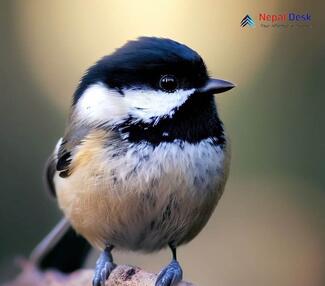Nestled within the breathtaking landscapes of Nepal, you can find a delightful variety of bird species. Among these winged wonders is the Coal Tit (Periparus ater), a small and captivating creature that has captured the hearts of bird enthusiasts worldwide. This little creature belongs to the tit family, Paridae. It was first documented by the renowned Carl Linnaeus in 1758, as part of the groundbreaking 10th edition of his work, Systema Naturae. In this article, we will explore the interesting features of the Coal Tit, its habitat, and why this unique bird is worth learning more about.
The Coal Tit: Characteristics and Features
At first glance, the Coal Tit may appear to be an ordinary songbird. However, upon closer inspection, you'll notice its distinctive black cap, white nape patch, and dark wings adorned with white bars. This little bird, which typically measures around 10-12 centimeters in length and weighs approximately 9-11 grams, is an irresistible sight for birdwatchers.
The song of the Coal Tit is equally enchanting; its high-pitched trills and calls are reminiscent of other tit species but have a distinct charm all their own. The Coal Tit's varied vocalizations play a significant role in communication within their tight-knit social groups.
Habitat: Home in Nepal's Wild Spaces
The Coal Tit thrives predominantly in coniferous forests found throughout Nepal. Though they can sometimes be spotted in mixed woodlands or gardens near human settlements, these birds prefer a more natural environment away from urban areas. The thick foliage and abundant food resources provided by trees like pines and junipers make these habitats ideal for supporting the small but energetic Coal Tits.
Adaptations to Life at High Altitude
One remarkable aspect of the Coal Tit's existence is its adaptability to Nepal's high-altitude environment. These hardy birds are known to reside at elevations ranging from 1,200 meters to 4,000 meters above sea level -- no small feat considering the thin air and harsh conditions encountered at such heights! To thrive in these areas, the Coal Tit has developed impressive adaptability, allowing it to locate food and shelter despite the challenging terrain.
A Positive Impact on the Local Environment
The Coal Tit isn't just a fascinating bird to observe; it also plays a critical role in Nepal's ecosystem. As an insectivore, these birds feast on various common forest pests like caterpillars, beetles, and spiders. By keeping insect populations in check, the Coal Tit contributes to the overall health of its woodland home.
In conclusion, the Coal Tit is yet another incredible example of Nepal's rich biodiversity. Its eye-catching appearance, unique habitat preferences, and vital contributions to its environment make this small songbird a standout among the many bird species found in Nepal. While exploring this beautiful country's landscapes, be sure to keep an eye out for this remarkable creature as you immerse yourself in nature's wonders.




